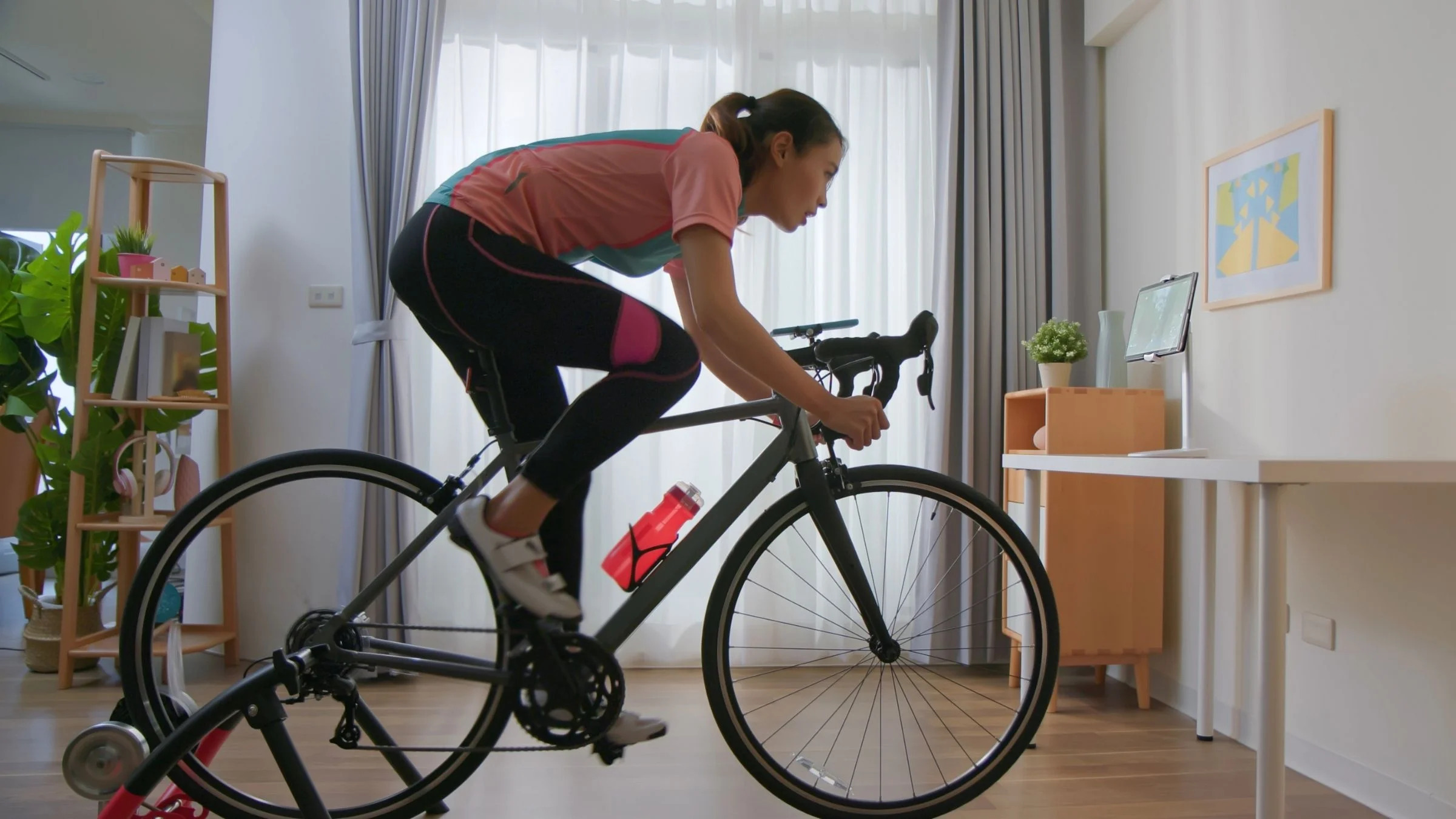
Conquering the Tri: Your Comprehensive Guide to Training for a Triathlon at Home
The allure of triathlon is undeniable: the ultimate test of endurance, mental fortitude, and versatility across three challenging disciplines. However, for many aspiring triathletes, the traditional path of gym memberships, pool access, and endless outdoor miles can be daunting, limited by time, weather, or location. What if you could train for this epic challenge from the comfort and convenience of your own home?
The good news is, you absolutely can! While an actual open-water swim or a long outdoor bike ride offers unique sensations, the foundational fitness, strength, and endurance required for a triathlon can be meticulously built within your home environment. This comprehensive guide will equip you with the knowledge, strategies, and motivation to transform your living space into a personal triathlon training ground, preparing you to cross that finish line.
I. Setting the Stage: Your Home Triathlon Hub
Before diving into the specifics of each discipline, consider how you’ll organize your training space. A dedicated area, even a small one, can significantly boost consistency and motivation.
- The "Pain Cave" (Cycling): A corner of your garage, basement, or even a spare room for your bike on a trainer, complete with a fan, water bottle, and perhaps a screen for virtual platforms.
- The "Dryland Zone" (Swimming & Strength): An open floor space for bodyweight exercises, yoga mats, resistance bands, and potentially a few dumbbells.
- The "Run Station" (Running): If you have a treadmill, place it conveniently. If not, designate space for jump rope, plyometrics, and stair work.
- Essential Accessories: Towels, water bottles, a good fan (for indoor cycling/running), and a reliable timer or smartwatch are crucial.
II. Mastering the Disciplines at Home
Let’s break down how to effectively train for each leg of the triathlon without leaving your doorstep.
A. The Swim: Dryland Dominance
Swimming is often the most challenging discipline to replicate at home. While you can’t get actual water time, you can build incredible swim-specific strength, endurance, and technique through dryland training. This is vital for improving power, reducing injury risk, and enhancing your feel for the water when you do get a chance to swim.
Why Dryland is Key:
- Core Strength: The powerhouse of efficient swimming, connecting upper and lower body.
- Shoulder Stability & Power: Essential for a strong, injury-free stroke.
- Rotational Movement: Mimics the body roll in freestyle, improving glide and reach.
- Endurance: Holding challenging positions builds muscular endurance.
Home Dryland Exercises:
-
Core Work:
- Planks (Front, Side): Hold for 30-60 seconds, focusing on a straight line from head to heels.
- Supermans: Lie face down, lift arms and legs simultaneously, hold. Strengthens posterior chain.
- Leg Raises/Flutter Kicks: Lie on your back, lift legs, perform small, controlled kicks.
- Russian Twists: Sit, lean back slightly, twist torso side to side (with or without a weight).
- Dead Bug: Lie on back, extend opposite arm/leg slowly, maintaining core engagement.
-
Shoulder & Arm Strength (Resistance Bands are Gold):
- Band Pull-Aparts: Hold a band in front, pull apart to chest, squeezing shoulder blades.
- Band Rows: Anchor band to a sturdy object, pull towards your body like rowing.
- Band Triceps Extensions: Anchor band overhead, extend arm downwards.
- Band Chest Flyes: Anchor band behind you, perform a chest fly motion.
- Shadow Swimming: Stand or lie on a bench, mimic freestyle strokes with focus on hand entry, catch, and pull. Use light weights or bands for added resistance.
-
Rotational Drills:
- Medicine Ball Twists/Slams: If you have a soft medicine ball, perform controlled twists against a wall or slams into the ground.
- Torso Rotations: Standing or seated, rotate your upper body, engaging your core.
Incorporating Dryland: Aim for 2-3 sessions per week, 20-40 minutes each. Focus on controlled movements and proper form over speed. Visualize your swim stroke with each exercise.
B. The Bike: Indoor Domination
Indoor cycling has revolutionized home triathlon training. With the right setup, you can replicate almost any outdoor ride, from long endurance efforts to brutal interval sessions.
Equipment Options:
- Smart Trainer: The gold standard. Connects to your existing road bike. Adjusts resistance automatically based on virtual courses or structured workouts (e.g., Zwift, TrainerRoad, Sufferfest). Provides power, speed, and cadence data.
- Dumb Trainer + Sensors: A more affordable option. Uses your existing bike. Resistance is manual or fixed. Add speed/cadence sensors to track data on apps like Zwift or Rouvy.
- Indoor Spin Bike/Stationary Bike: A dedicated unit. Good for general fitness, but less specific to triathlon if it doesn’t offer adjustable resistance or power metrics. Look for bikes with good adjustability and a smooth flywheel.
- Rollers: Require more balance and skill, but excellent for developing a smooth pedal stroke and core engagement. Less common for structured power-based training.
Setting Up Your "Pain Cave":
- Fan(s): Crucial for cooling and preventing overheating.
- Towel: To catch sweat.
- Hydration: Plenty of water or electrolyte drinks.
- Entertainment/Training Platform: A TV, tablet, or computer running virtual cycling apps (Zwift for engagement, TrainerRoad for structured workouts) makes the time fly by.
- Comfort: A comfortable saddle, good cycling shorts, and proper bike fit are still important.
Home Cycling Workouts:
- Endurance Rides (Zone 2): Long, steady rides (60-120+ minutes) focusing on conversational pace. Build aerobic base.
- Tempo Rides (Zone 3): Sustained efforts at a moderately hard pace (20-60 minutes). Improves lactate threshold.
- Interval Training (HIIT): Short bursts of high intensity followed by recovery. Improves speed, power, and VO2 max. (e.g., 5×5 min at threshold, 5 min recovery).
- Cadence Drills: Focus on maintaining a high cadence (90-100+ RPM) or low cadence (60-70 RPM) for specific intervals to improve pedaling efficiency.
Incorporating Cycling: Aim for 3-4 sessions per week. Vary the intensity and duration. Indoor cycling is excellent for consistency, as weather is never a factor.
C. The Run: Treadmill & Beyond
Running is the most accessible discipline, even at home. While outdoor running offers varied terrain and fresh air, a treadmill is an excellent tool, and bodyweight exercises can supplement beautifully.
Treadmill Training:
- Controlled Environment: Perfect for precise pace and incline control. Great for interval training or maintaining a specific heart rate zone.
- Reduced Impact: Some treadmills offer cushioning that can be gentler on joints than pavement.
- Workout Variety:
- Easy Runs (Zone 2): Conversational pace.
- Tempo Runs: Sustained, moderately hard efforts.
- Intervals: Short, fast bursts with recovery (e.g., 8x400m at race pace, 200m walk/jog recovery).
- Hill Repeats: Increase incline to simulate climbing.
- Progressive Runs: Start slow and gradually increase pace.
Beyond the Treadmill (Bodyweight & Stairs):
- Stair Climbing: An excellent cardio and leg strength workout. Find a set of stairs in your home or apartment building and do repeats. Vary by running up, stepping up two at a time, or hopping.
- Jump Rope: Fantastic for cardiovascular fitness, agility, and improving foot speed. Aim for continuous sets or incorporate into circuits.
- Plyometrics (Explosive Leg Power):
- Box Jumps (onto a sturdy low box/step): Builds explosive power.
- Squat Jumps: From a squat position, jump vertically.
- Lunges (walking, jumping): Strengthens quads, hamstrings, and glutes.
- Calf Raises: Strengthens calf muscles, crucial for running.
- Running Form Drills: High knees, butt kicks, A-skips can be done in a small space to reinforce good running mechanics.
Incorporating Running: Aim for 3-4 sessions per week. If you have a treadmill, use it for structured runs. Supplement with stairs, jump rope, and plyometrics on other days or as warm-ups/cool-downs.
III. The Pillars of Home Triathlon Training
Beyond the three disciplines, several critical components ensure holistic home training.
A. Strength & Conditioning (S&C)
S&C is non-negotiable for triathletes. It prevents injuries, improves power, and boosts endurance. At home, bodyweight exercises and resistance bands are your best friends.
- Full Body Focus: Squats, lunges, push-ups, planks, burpees, supermans, glute bridges.
- Core, Core, Core: Crucial for stability in all three disciplines.
- Resistance Bands: Mimic gym machines for rows, presses, and pull-downs.
- Dumbbells/Kettlebells (if available): Add resistance to squats, deadlifts, overhead presses, and rows.
Aim for 2-3 S&C sessions per week, 30-45 minutes each.
B. Flexibility & Recovery
Training hard at home means you also need to recover smart at home.
- Stretching: Post-workout static stretches for major muscle groups.
- Yoga/Pilates: Excellent for flexibility, core strength, and body awareness. Many online videos are available.
- Foam Rolling: Release tight muscles in your quads, hamstrings, glutes, calves, and back.
- Rest: Prioritize 7-9 hours of sleep. Your body repairs and adapts during rest.
C. Nutrition & Hydration
Your kitchen is your fueling station. Training at home offers unparalleled control over your diet.
- Balanced Diet: Focus on whole foods: lean proteins, complex carbohydrates, healthy fats, and plenty of fruits and vegetables.
- Pre-Workout Fuel: Easily digestible carbs (e.g., banana, toast).
- Post-Workout Recovery: Protein and carbs within 30-60 minutes to aid muscle repair.
- Hydration: Drink water consistently throughout the day, not just during workouts. Replenish electrolytes after heavy sweating.
D. Mental Fortitude & Visualization
Training at home can sometimes feel monotonous. Cultivating mental strength is vital.
- Visualization: Spend time imagining yourself executing perfect strokes, powering through the bike, and running strong. Visualize race day scenarios, including transitions.
- Goal Setting: Break down your training into small, achievable daily and weekly goals.
- Discipline: Home training requires self-discipline. Set a schedule and stick to it.
- Break Monotony: Use virtual platforms, podcasts, music, or switch up your routine frequently.
IV. Crafting Your Home Triathlon Plan
1. Assess Your Current Fitness: Be honest about your starting point. Are you a complete beginner or do you have a base in one or two disciplines?
2. Set Your Goals:
- Race Distance: Sprint, Olympic, Half-Ironman, or Full Ironman. This dictates training volume.
- Time Goal: A specific finish time, if applicable.
- Process Goals: E.g., "complete 3 S&C sessions per week," "improve my cycling FTP by 10%."
3. Design Your Schedule:
- Consistency is Key: Aim for 4-6 training days per week, allowing for rest.
- Progressive Overload: Gradually increase duration, intensity, or frequency over time.
- Periodization: Divide your training into phases (base, build, peak) if preparing for a specific race.
- Sample Weekly Schedule (Olympic Distance Example):
- Monday: S&C (Full Body)
- Tuesday: Bike (Intervals, 60 min) + Dryland Swim (30 min)
- Wednesday: Run (Easy, 45 min)
- Thursday: Bike (Endurance, 90 min)
- Friday: S&C (Core/Upper Body) + Dryland Swim (30 min)
- Saturday: Run (Longer, 60-90 min)
- Sunday: Rest or Active Recovery (Light yoga/stretching)
4. The Home "Brick" Workout:
Crucial for triathlon, bricks train your body to transition from one discipline to the next.
- Bike-to-Run: Finish an indoor bike session (e.g., 60-90 minutes) and immediately hop onto the treadmill for a 15-30 minute run. This simulates race day fatigue.
- Swim-to-Bike (Dryland): After a dryland swim session, jump straight onto your indoor bike for a short ride.
5. Listen to Your Body:
Over-training is a real risk. Pay attention to fatigue, persistent soreness, or changes in mood. Take extra rest days when needed. Injury prevention is paramount, especially when pushing your limits.
V. Essential Home Training Gear Checklist
- Bike Trainer (Smart or Dumb) OR Spin Bike
- Road Bike (if using a trainer)
- Resistance Bands (various strengths)
- Yoga Mat
- Foam Roller
- Jump Rope
- Dumbbells/Kettlebells (optional, but highly recommended)
- Treadmill (optional, but highly recommended)
- Sturdy Box/Step (for plyometrics)
- Fan(s)
- Water Bottles/Hydration System
- Fitness Tracker/Smartwatch
- Access to online training apps (Zwift, TrainerRoad, YouTube for S&C/Yoga)
Conclusion
Training for a triathlon at home is not just a viable alternative; for many, it’s the most practical and sustainable way to prepare. By leveraging dryland swimming, indoor cycling, treadmill running, and a robust strength and conditioning program, you can build a formidable fitness base. The convenience, control, and efficiency of home training allow you to integrate demanding workouts seamlessly into your daily life.
While race day will eventually take you outdoors, the discipline, strength, and endurance forged within your home will be the bedrock of your success. Embrace the challenge, be consistent, listen to your body, and soon you’ll be ready to transition from your living room to the start line, confident in the incredible journey you’ve undertaken. Your home is not just where the heart is; it’s where your triathlon dream begins.



